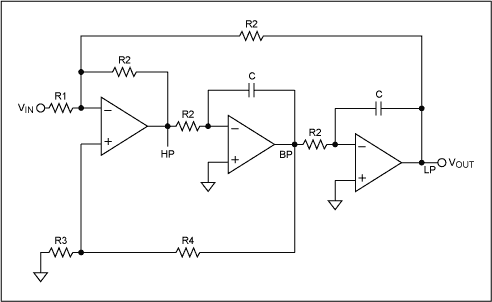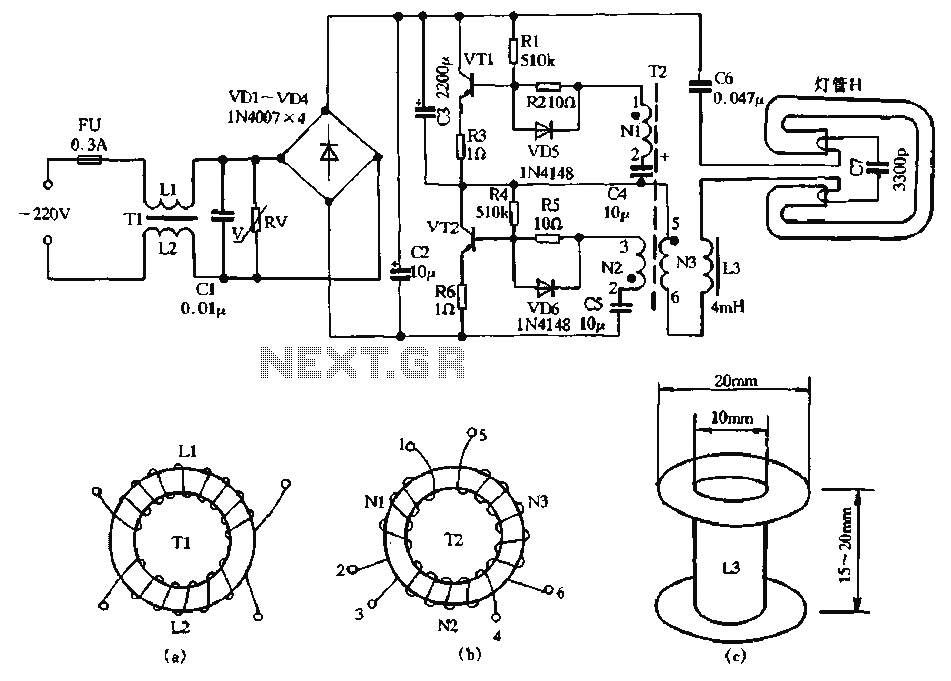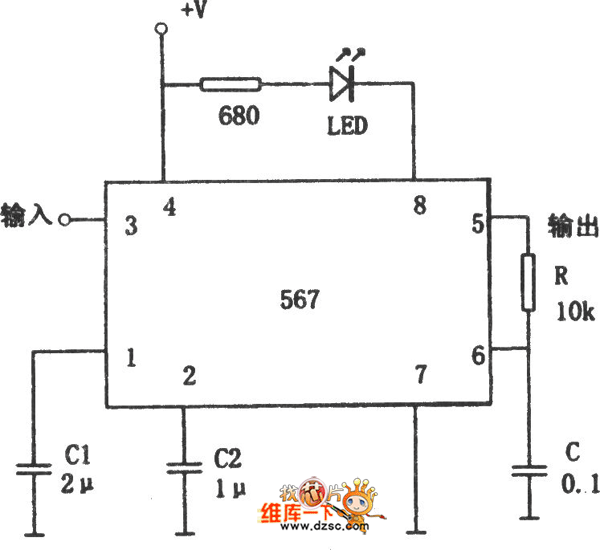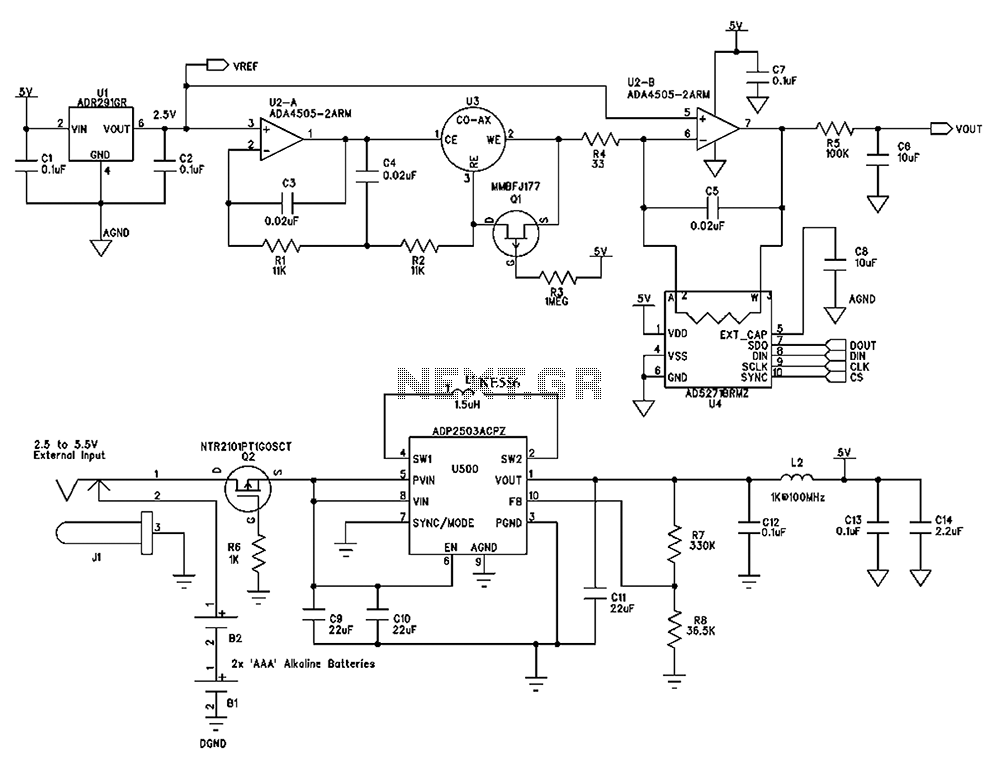
The frequency shift demodulator circuit composed of active filter
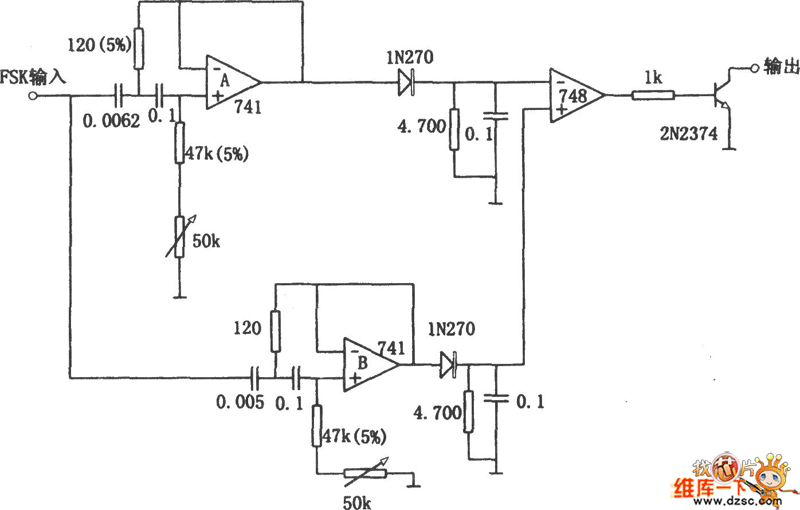
Replacing the LC modulation circuit with an active filter allows for the elimination of large and costly inductance coils in frequency shift key control demodulators. This approach not only reduces the size of the circuit but also enhances the performance of the demodulator. The circuit is designed to demodulate a 100-byte frequency shift key control signal, with a symbol frequency of 2225 Hz.
The active filter circuit serves as a crucial component in the demodulation process, enabling the extraction of the desired signal from the modulated carrier wave. By utilizing operational amplifiers and passive components such as resistors and capacitors, the active filter can achieve a more compact design with improved frequency response compared to traditional LC circuits.
The circuit operates by first receiving the modulated signal, which is then processed through the active filter. The filter is configured to pass the frequencies of interest while attenuating unwanted frequencies, thus ensuring that the demodulated output closely resembles the original signal. The choice of filter topology—such as low-pass, band-pass, or high-pass—will depend on the specific requirements of the application and the characteristics of the incoming signal.
In this particular application, the demodulated output will represent the 100-byte data signal encoded at a symbol frequency of 2225 Hz. This frequency is critical as it must be accurately tracked to ensure proper data recovery. The active filter's performance, including its bandwidth and roll-off characteristics, directly influences the fidelity of the demodulation process.
Furthermore, the reduced size and cost of using an active filter make it an attractive alternative for modern electronic designs, where space and budget constraints are often significant factors. Overall, this innovative approach to demodulation not only enhances the efficiency and effectiveness of the circuit but also contributes to the advancement of compact communication systems.Replacing LC modulation circuit by the active filter, we can avoid using large and expensive inductance coils in frequency shift key control demodulator, it is not only small in size, but also improves the function of the demodulator. This circuit is used to demodulate the 100 byte frequency shift key control signal, whose symbol frequency is 2225Hz, open fr..
🔗 External reference
The active filter circuit serves as a crucial component in the demodulation process, enabling the extraction of the desired signal from the modulated carrier wave. By utilizing operational amplifiers and passive components such as resistors and capacitors, the active filter can achieve a more compact design with improved frequency response compared to traditional LC circuits.
The circuit operates by first receiving the modulated signal, which is then processed through the active filter. The filter is configured to pass the frequencies of interest while attenuating unwanted frequencies, thus ensuring that the demodulated output closely resembles the original signal. The choice of filter topology—such as low-pass, band-pass, or high-pass—will depend on the specific requirements of the application and the characteristics of the incoming signal.
In this particular application, the demodulated output will represent the 100-byte data signal encoded at a symbol frequency of 2225 Hz. This frequency is critical as it must be accurately tracked to ensure proper data recovery. The active filter's performance, including its bandwidth and roll-off characteristics, directly influences the fidelity of the demodulation process.
Furthermore, the reduced size and cost of using an active filter make it an attractive alternative for modern electronic designs, where space and budget constraints are often significant factors. Overall, this innovative approach to demodulation not only enhances the efficiency and effectiveness of the circuit but also contributes to the advancement of compact communication systems.Replacing LC modulation circuit by the active filter, we can avoid using large and expensive inductance coils in frequency shift key control demodulator, it is not only small in size, but also improves the function of the demodulator. This circuit is used to demodulate the 100 byte frequency shift key control signal, whose symbol frequency is 2225Hz, open fr..
🔗 External reference
